Using an Elliptical Trainer After Total Knee Replacement Surgery
An elliptical trainer may be the best of all worlds when choosing an exercise machine after a total knee replacement surgery.
The elliptical trainer allows you to perform weight bearing exercise without the impact of walking or jogging on your new knee joint.
You also receive the benefits of a vertical component with each step or revolution.
Video: Benefits of the Elliptical Trainer Post Knee Replacement
Video Summary:
Tony Maritato, PT emphasizes the elliptical trainer as a highly effective equipment choice after undergoing a total knee replacement. Unlike treadmills and bikes, the elliptical offers weight-bearing exercises, promoting a more functional return to walking. It’s designed to reduce impact forces on joints, encourage symmetrical stride lengths, and is user-powered, ensuring safety and control during workouts.
Usage Instructions for the Elliptical Trainer
When using the elliptical, it’s essential to get on and off safely. To get on, one should position the pedals to step over with the non-surgical leg first, then step up with the surgical side. Gentle rocking can be initiated to warm up the surgical leg, followed by full revolutions. To get off, the surgical foot should be removed first, followed by the non-surgical foot.
Comparing the Elliptical to Other Equipment
While treadmills and stationary bikes have their advantages, Tony prefers the elliptical for post-surgery recovery. The treadmill can pose certain risks, and while bikes are great for range of motion, the elliptical’s weight-bearing nature makes it more functional for walking recovery. Regardless of the equipment, it’s crucial to choose what aligns with one’s recovery stage.
Is An Elliptical Trainer Safe After Total Knee Replacement
The elliptical trainer is a wonderful choice for exercise equipment following a total knee replacement surgery. You gain the advantage of weight bearing exercise to improve the health of the bones while minimizing the impact of walking or jogging.
Another benefit includes control over the vertical aspect of each step. The taller the incline on an elliptical trainer the greater your knee range of motion. This is better than walking when it comes to improving knee range of motion
One other often overlooked benefit of an elliptical trainer is the fact that your feet are moving in a rhythmic and reciprocal pattern.
Normal walking allows you to shorten one stride while taking a longer step on the non-surgical side. This imbalance may lead to other complications down the road.
When can I start using an elliptical trainer after surgery?
Many clients are able to start using an elliptical trainer within the first week following surgery.
The elliptical requires less knee range of motion than a typical stationary bike and is often more comfortable than walking.
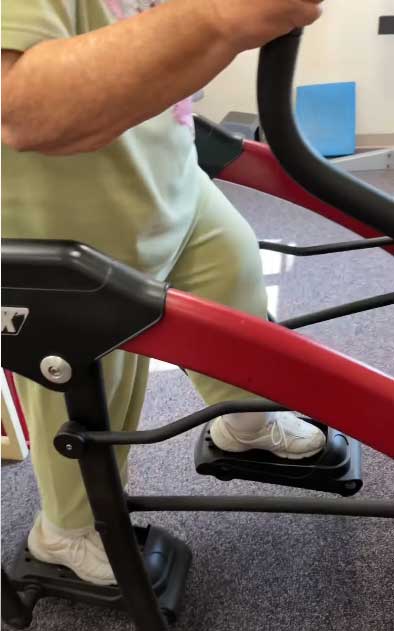
How long should I use an elliptical trainer during each workout?
Most of my clients begin with a 2 minute episode the first time they use an elliptical following knee replacement surgery.
I often recommend stopping before you feel like you have to stop. This allows you to build confidence and focus on the quality of your motion instead of the quantity of your motion.
Early in the recovery process we want recommend you take ample rest breaks.
Elliptical Training Plan:
Day 1-10: Perform between 30-seconds and 2-minutes per episode and up to 4 episodes a day at a low intensity.
Day 11 – 28: Gradually increase the duration by 10% each day until you achieve a continuous episode of 10-minutes without shortness of breath. The intensity should feel like a 3/10 with 10/10 being so intense you are forced to stop.
Week 5 and beyond: Gradually increase duration of each episode to a maximum of 30-minutes. If you are able to perform 30-minutes of continuous walking on an elliptical trainer then reduce your duration and increase your resistance or elevation.
How do I know if I am doing too much?
The best way to determine if you are overtraining is to consider how you feel the same night of the next day after a workout. If you are more fatigued or your pain is increasing then you either need to exercise less or take a longer break between workouts.
I find that increasing fatigue and soreness along with possible increased stiffness and loss of range of motion are signs of overtraining.
If you are experiencing these symptoms consider taking a 48-hour rest break of all structured exercises and only perform normal daily activities.
Which is the best elliptical to purchase?
These days there are many varieties of elliptical trainers. Consider features like:
- moving arms
- a flat or angled foot plate
- the length and weight of the machine
- how difficult it may be to move around your home or apartment
- and the resale value of the brand
Is an elliptical better than a stationary bike?
PROS:
- Allows you to perform weight bearing exercise
- Burns more calories per minute
- Provides a total body workout
CONS:
- More expensive
- Takes up more space
- Harder to move around your home
What would a physical therapist choose?
I would choose an elliptical over a stationary bike simply because the long term benefits and use of an elliptical outweigh those of a bike.
Here are some of my recommended Elliptical Machines for home use:
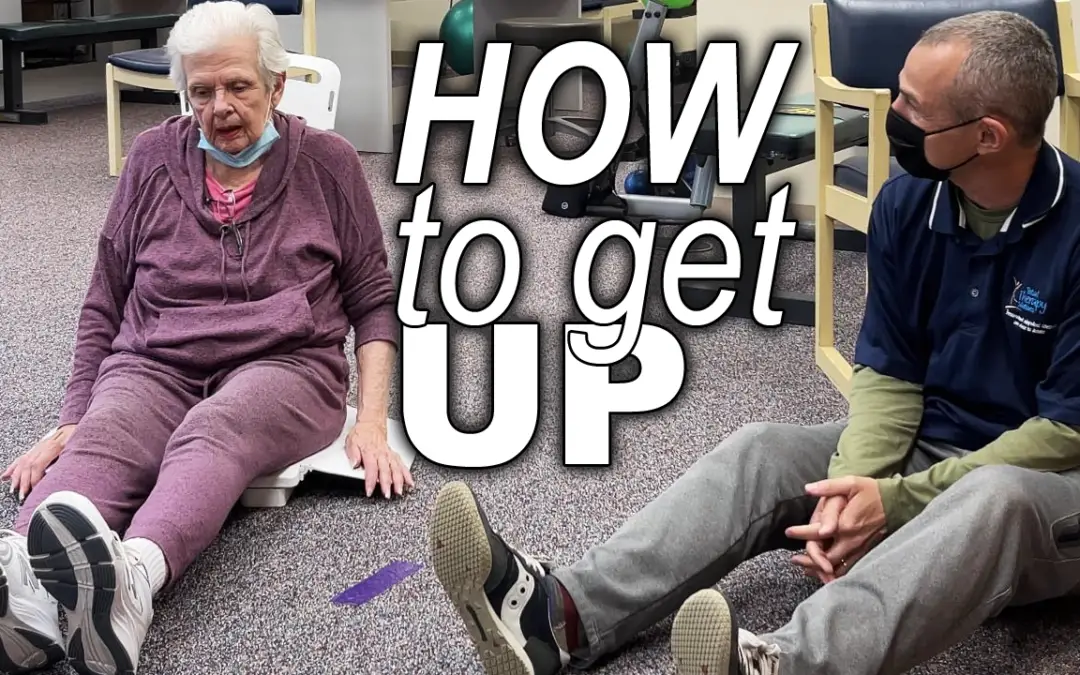
Top 3 Devices To Help Get An Elderly Person Up From The Floor
3 Best Devices in 2021 To Help An Elderly Person UP from the Floor After a Fall. Under $100, Under $1,000, and Over $2,000

Lymphedema LIVE Class Registration
WHAT: In this LIVE class you will learn what you can do to manage swelling, reduce pain, and improve healing after a total knee replacement surgery. Dr. Andrea Leifer, PT, CLT-LANA is a lymphedema expert and educator. WHEN: March 31, 2021 at 3PM EST WHERE: Online Zoom...
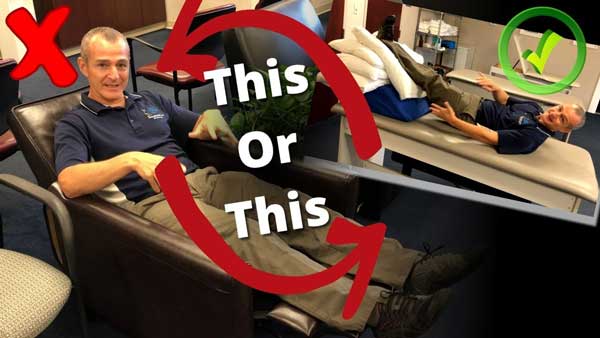
10 Questions About Leg Elevation After Knee Surgery
Physical Therapist Anthony Maritato, PT Recommends the 3 BEST leg elevation pillows after knee replacement surgery | 10 Common Questions Patients Ask

Does It Hurt To Have Staples Removed After Knee Replacement Surgery
Removing Staples After Knee Replacement Surgery Staple removal is often painless and quick. In the following video a person removes his staples at home, but it is always recommended you allow your physician or surgical team remove the staples in their office.Why Are...
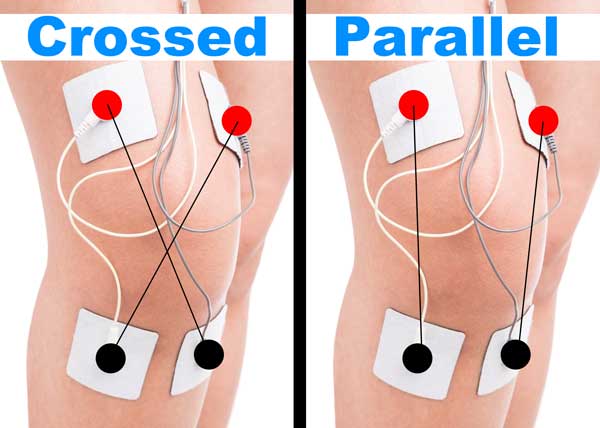
BEST Tens Placement for Knee Pain
Is TENS a Good Way to Reduce Knee Pain? Transcutaneous Electrical Nerve Stimulation (TENS) is a non-invasive, drug-free method for pain relief that has been widely used to manage various types of pain, including knee pain. TENS therapy involves sending low-voltage...

How many times a day can you do Neck Traction
Neck (cervical) traction is most commonly prescribed in 10 to 20 minute episodes. In this article I share the BEST positions to use cervical traction and what you NEED to AVOID when using it.

Which Activities Should I Avoid After Total Knee Replacement?
Click here to see a list of activities you should avoid after total knee replacement as well as a BUNCH of activities you may ENJOY.

Why Does my Knee Replacement Make Noise?
Would you like to know why your knee replacement makes noise? Is it a grinding? Is it a clicking? Or is it a popping? Snap, crackle, pop may be common after a total knee replacement. Read on to learn why-

How long should I ICE my knee after knee replacement?
Icing after a total knee replacement should be performed for between 10 and 20-minutes. If icing is painful then consider using heat instead. Explore myths about icing in this article.
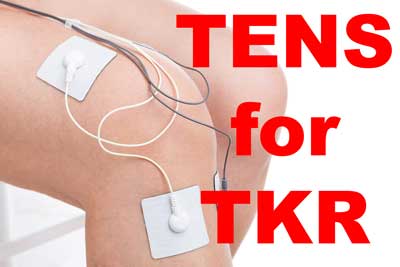
Is tens SAFE to use for knee pain?
Have you been wondering if a TENS unit could reduce knee pain associated with arthritis? A TENS unit may be a great drug free way to reduce pain following a total knee replacement. In this article we will discuss how and when to use a TENS unit for drug free pain relief of knee pain.


